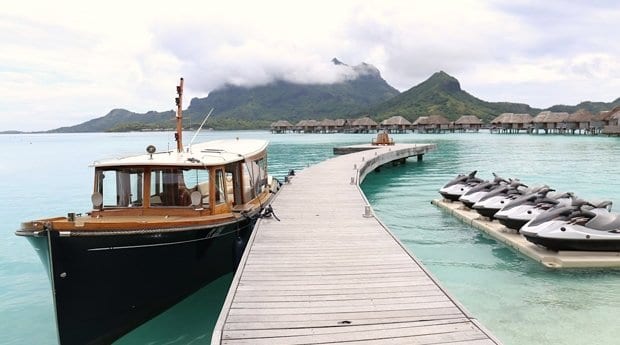
After strolling onto Bora Bora Airport’s dock, I am greeted with a tiare-flower lei, a cold bottle of water and a chilled oshiburi towel. Credit: Andrew John Virtue Dobson
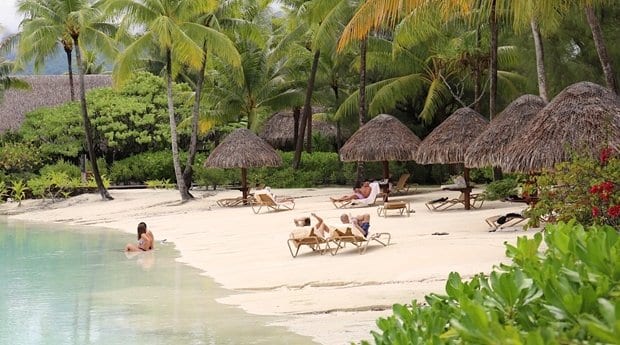
A day at the beach in Bora Bora. Credit: Andrew John Virtue Dobson
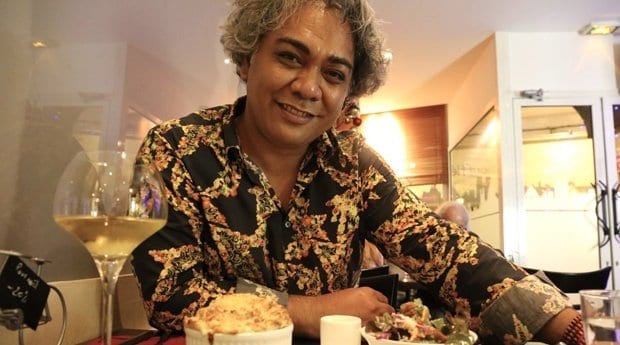
The flamboyant and always smiling Mr Johns, a local gay man who has a flair for hair. Credit: Andrew John Virtue Dobson
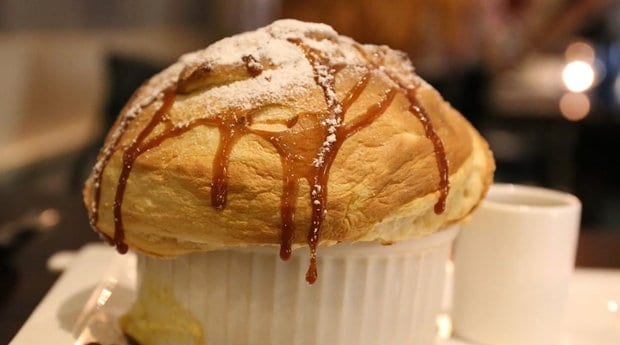
At Restaurant Soufflé, dessert is an impressive savoury-meets-sweet soufflé offering. Credit: Andrew John Virtue Dobson
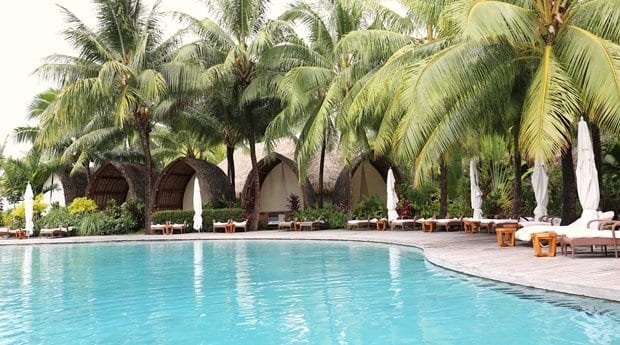
The Four Seasons Resort Bora Bora is a one-way ticket to paradise. It’s a heavenly holiday that feels surreal from start to finish. Credit: Andrew John Virtue Dobson
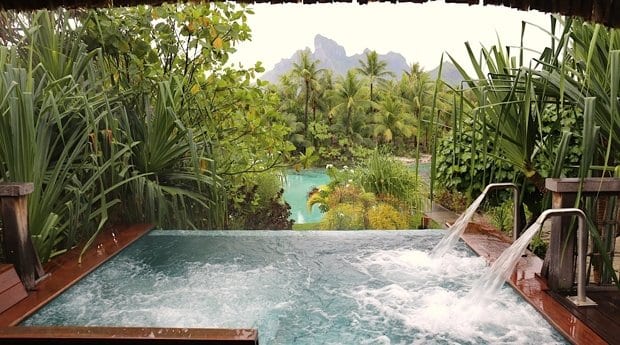
Each bungalow features a sundeck with chaises longues, a covered dining area and a ladder to the water that leads inevitably to sunset whispers of “Honey, we should really take a quick dip before dinner.” Credit: Andrew John Virtue Dobson
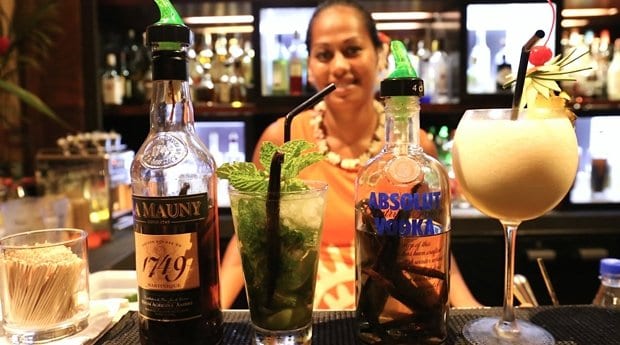
Tropical cocktails. Credit: Andrew John Virtue Dobson
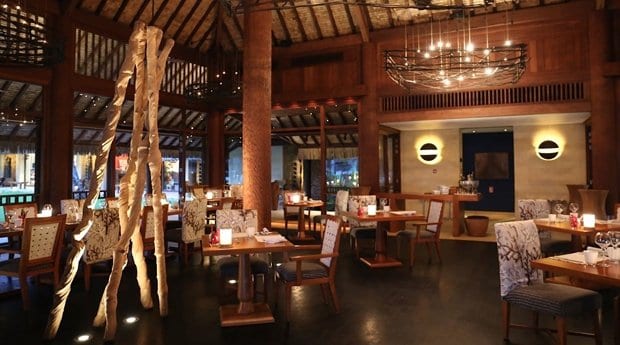
Arii Moana is the resort’s dreamy fine-dining restaurant. Credit: Andrew John Virtue Dobson
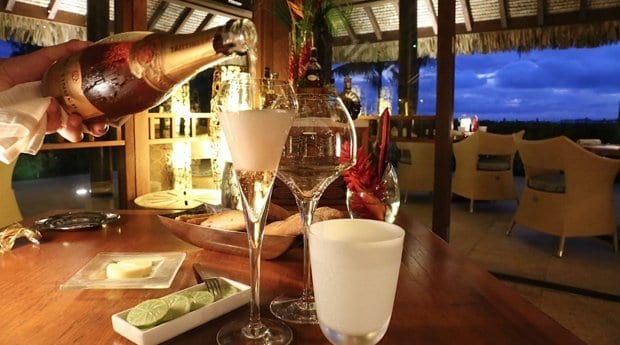
I take a sip from a flute of Taittinger Brut Rosé while smiling at a dichotomous crowd: well-seasoned lovey-dovey couples and fresh-off-the-boat honeymooners. Credit: Andrew John Virtue Dobson
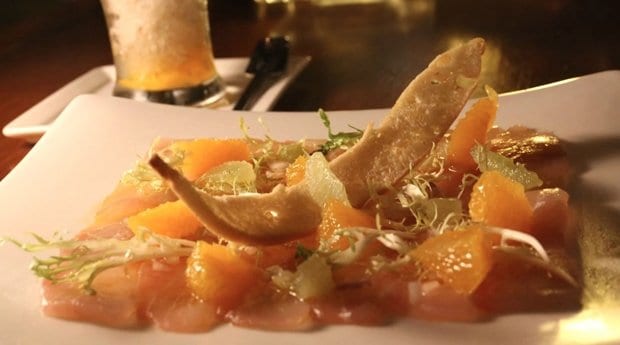
Glistening carpaccio of mahi-mahi adorned with citrus and pink pepper. Credit: Andrew John Virtue Dobson
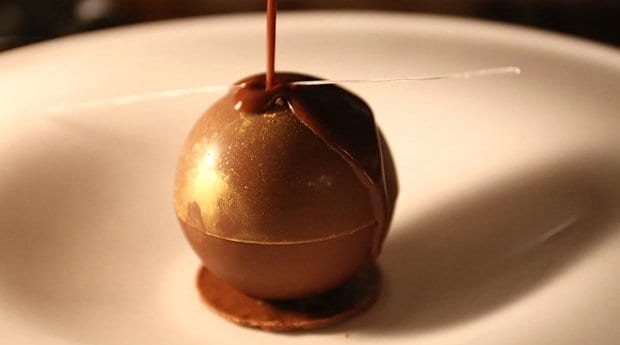
A cocoa sphere filled with caramelized banana and ice cream that melts before your eyes as a tiny pot of molten chocolate drizzles from above. Credit: Andrew John Virtue Dobson
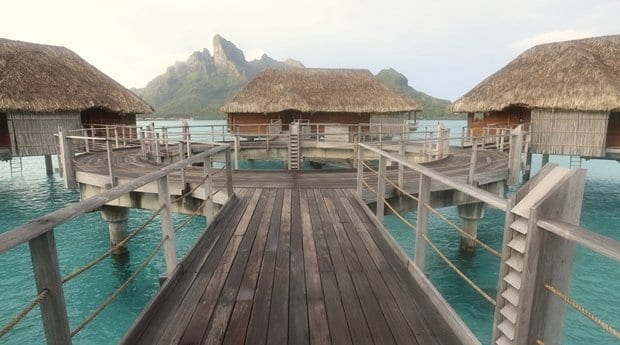
Traditional thatched-leaf roofs adorn every building, made from the leaves of the indigenous pandanus tree, grown on nearby plantations and woven by local craftsmen. Credit: Andrew John Virtue Dobson
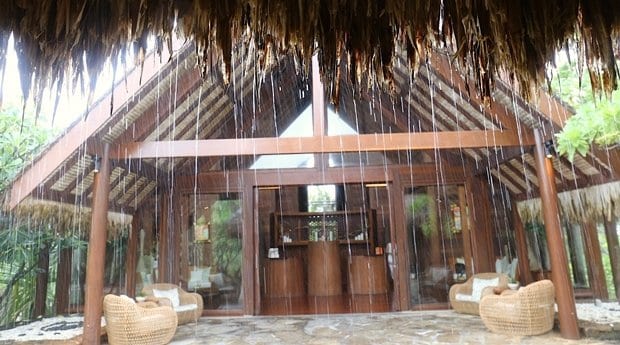
At the spa as Mother Nature performs her tropical symphony. Credit: Andrew John Virtue Dobson
On my final evening in Papeete, the capital of French Polynesia and the main municipality on the island of Tahiti, I find myself sitting in a small fine-dining room. Restaurant Soufflé sits across from city hall and is perhaps the best spot to chitchat about everything that’s gay in French Polynesia.
My guest for the evening is the flamboyant and always smiling Mr Johns, a local gay man who has a flair for hair. The menu is scribbled on a chalkboard and reads like a righteous French feast: foie gras, duck magret, black truffle and an impressive savoury-meets-sweet soufflé offering.
Mr Johns spends the evening chatting about what life is like for the LGBT community in French Polynesia. “Tahiti is absolutely gay-friendly; we legalized same-sex marriages here not long ago. There is a small local community that hangs out in the city, mostly at house parties on weekends, but my friends and I also love to go dancing at bars downtown. We finish our night at Les Roulottes, chowing down on chow mein. The food trucks owned by Chinese immigrants offer the ultimate drunk food at 2am.” The talk turns to laughter as I describe Canada’s own late-night pride and joy: the ubiquitous poutine.
Mr Johns then offers an education on the mahu. The term originally referred to transvestites in pre-colonial Polynesia who were not only accepted in their communities, but were regarded as gifted and divine, possessing both male and female qualities. Today, locals prefer to use the term rae rae, and the definition has broadened to include crossdressers, drag queens, female impersonators and transgender people.
I can’t help but compare my experience in Tahiti with that of the trans-positive lady-boy culture in Thailand. The prevalence of rae raes in everyday culture here is attributed to the local practice where families without any girls raise one of their boys as female. I had the opportunity to chat with plenty of campy rae rae who work as bartenders and servers at the dreamy luxury resorts that tourists flock to across the archipelago.
French Polynesia’s remote island of Bora Bora is perhaps the most romanticized isle on Earth and offers a postcard-perfect backdrop for your gay wedding or honeymoon. After strolling onto Bora Bora Airport’s dock, I am greeted with a tiare-flower lei, a cold bottle of water and a chilled oshiburi towel. Moments later, I find myself splashing across a blue lagoon in a luxurious custom-crafted Andreyale water taxi. An endless twinkle of lights beckons the boat to shore, like a choir of softly singing sirens. We putter past endless rows of thatched-roof bungalows perched over the water on sturdy stilts. The captain docks gently at our destination, and I skip into a breezy lobby, where I am greeted with a smile and a wee glass of mango nectar served on a silver platter. I have arrived at one of the world’s dreamiest luxury retreats: the Four Seasons Resort Bora Bora is a one-way ticket to paradise. It’s a heavenly holiday that feels surreal from start to finish.
The resort sits upon 54 sprawling acres, capped by the towering monolithic peak of Mount Otemanu and the domed summit of Mount Pahia. Its architecture is the fruit of a unique collaboration that brings together the cosmopolitan flair of Parisian architect Didier Lefort, the modern elegance of San Francisco design firm BAMO and the Polynesian authenticity of renowned South Pacific architect Pierre-Jean Picart.
Traditional thatched-leaf roofs adorn every building, made from the leaves of the indigenous pandanus tree, grown on nearby plantations and woven by local craftsmen. The resort’s 100 overwater bungalows all measure more than 100 square metres and are located on branching piers that extend into Bora Bora’s inner lagoon. Inside, hardwood floors and walls are stained in a light palette that suggests driftwood or coral, while small lagoon windows fill the space with magical, turquoise-tinted sunlight as it reflects off the water. Rooms are appointed with framed indigenous artifacts, from fishing lures fashioned from mother-of-pearl to fans made of coconut palms. Each bungalow features a sundeck with chaises longues, a covered dining area and a ladder to the water that leads inevitably to sunset whispers of “Honey, we should really take a quick dip before dinner.”
Arii Moana is the resort’s dreamy fine-dining restaurant, and each night the room fills with diners eager to indulge in chef Frederic Angevin’s menu, which he describes as “a base of traditional and nouvelle French cuisine, with American-style fusion, featuring the ingredients and flavours of Polynesia and beyond.” I take a sip from a flute of Taittinger Brut Rosé while smiling at a dichotomous crowd: well-seasoned lovey-dovey couples and fresh-off-the-boat honeymooners. Highlights include a refreshing chilled cucumber and coconut soup, glistening carpaccio of mahi-mahi adorned with citrus and pink pepper and a sweet finish by way of a cocoa sphere filled with caramelized banana and ice cream that melts before your eyes as a tiny pot of molten chocolate drizzles from above.
It is raining cats and dogs when I arrive at the spa, and I am happy to have the opportunity to rest indoors as Mother Nature performs her tropical symphony. After a short lounge in the relaxation room, I am whisked through the damp forest and into a pretty room with a view. My therapist walks me through a selection of local oils; I sniff through the group and select the banana-coconut duo.
The South Pacific has a rich history, called taurumi, of passing down the art of healing massage and therapeutic treatments from generation to generation. I tap into this tradition over the next hour as my therapist uses her arms, elbows and wrists to release tension from head to toe, a soothing, dancelike style that seems inspired by the rhythm of ocean waves. I wake up in ecstasy and pinch myself to be sure this isn’t all just a dream.
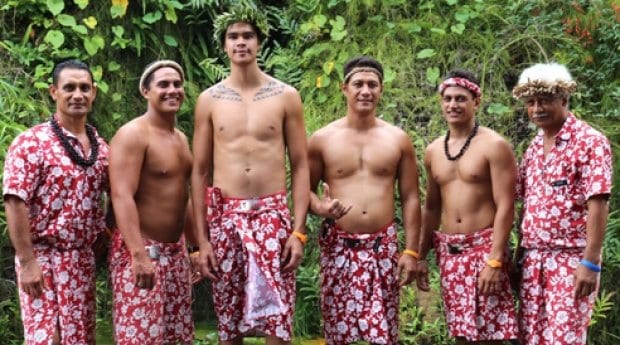
 Why you can trust Xtra
Why you can trust Xtra